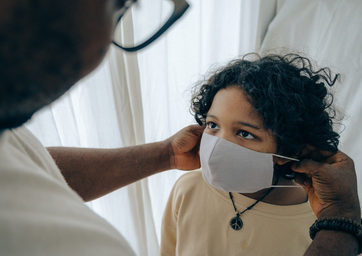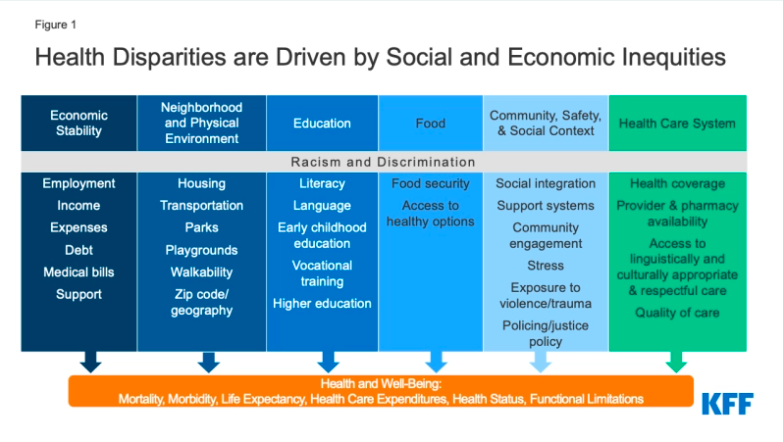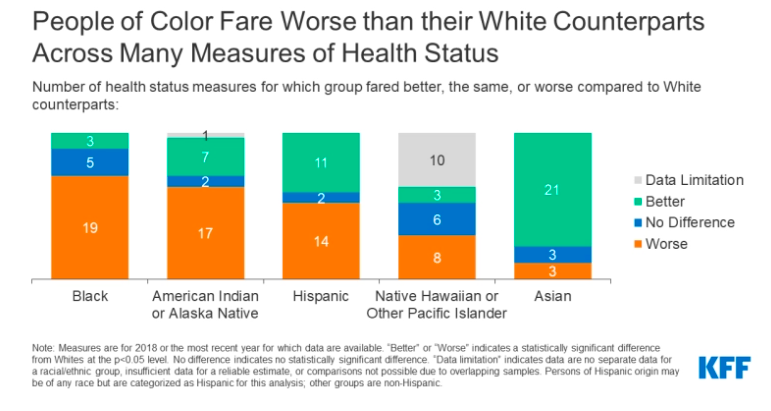The Health Disparities Blocking Our Care

According to the CDC, Health Disparities are “defined as preventable differences in the burden of disease, injury, violence, or opportunities to achieve optimal health experienced by socially disadvantaged populations.”
The rise of Black maternal mortality and the constant dismissiveness of childhood abuse as a health issue are examples of health disparities in the medical system. These disparities are categorized by a lack of sustainable resources in marginalized communities, such as access to healthy foodand clean water. Below is an illustration from the Kaiser Family Foundation that gives an in-depth overview of what is defined as a health disparity.

Community identities such as gender, race, ethnicity, and sexual orientation are often a crossfire of health disparities. As illustrated below, marginalized communities of color continue to have a gap between their white counterparts in car
 Kaiser Family Foundation
Kaiser Family Foundation
The questions become how can we make ourselves aware of the disparities in our system, and how can we advocate for our individual and collective health?
The answer is to listen and learn from the research about the medical implications of health disparities and look back at the social oppressions and their impact.
Economic Stability
- The wage gap in marginalized communities of color and lack of employment benefits can prevent individuals from having adequate insurance to navigate healthcare.
- The rise in debt does not allow for the financial freedom to offer other healthcare options.
Neighbors and Physical Environment
- Community redlining can impact the quality of providers that are within the community.
- Lack of transportation impacts the ability to get healthy food and proper healthcare.
Education
- Lack of childhood educational opportunities and healthy after-school care.
- Lack of information about health in both childhood and adulthood.
Food
- Lack of food can create an unhealthy relationship with food and makes no room for healthy eating.
- In marginalized communities of color, corner stores and bodegas are the centers for food and medication.
Community, Safety, and Context
- Community is public health, and lack of community engagement can lead to isolation and further cause a decline in mental health.
- The lack of healthcare professionals researching the issues that impact the community creates a decline in community building.
Health Care System
- The lack of culturally respectful and competent healthcare providers doesn’t allow for the healthy patient and provider relationships.
- Lack of making language barriers more accessible.
These disparities are ingrained oppressions in our communities! It is not enough to just be a “good doctor.” It takes an active understanding of the world many marginalized people of color navigate. We challenge providers to dive deeper into the communities around them and issues impacting others in the US and globally. We also empower patients to ask the hard questions and continue learning about the needs of their body and their community.
In addition, during the summer of 2022, HUED will be launching its E-learning pilot course centering on cultural competency. This program will equip care seekers and providers with the information needed to understand how these health detriments impact us individually and as a community.
Stay connected to us on Instagram @HUEDCO.
Site content is provided for informational purposes only and is not intended to be a substitute for professional medical advice, diagnosis, or treatment.


